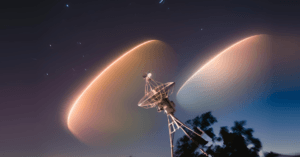Musk’s X & Starlink Face Major Showdown with India Over Censorship – 3 Big Challenges Ahead
Elon Musk’s companies, X (formerly Twitter) and Starlink, are caught in a regulatory battle with the Indian government over censorship and control. X has challenged India’s content takedown policies in the Karnataka High Court, arguing that the government is using an unauthorized system to bypass legal safeguards. The issue escalated with the introduction of the ‘Sahyog Portal,’ which allows officials to remove online content without judicial oversight. Meanwhile, Musk’s AI chatbot, Grok3, has added to tensions by responding to politically sensitive questions, raising concerns about free speech.
On the other hand, Starlink is struggling to get final approval to operate in India, with the government demanding a locally based control center to oversee and potentially shut down satellite communications in emergencies. While India is a crucial market for both companies, excessive government interference could impact their growth and user base. X is at risk of losing its relevance if it cannot uphold free speech, and Starlink must decide whether it can accept strict oversight. The outcome of these legal battles will have a significant impact on how global tech companies operate in India.

Musk’s X & Starlink Face Major Showdown with India Over Censorship – 3 Big Challenges Ahead
Following Prime Minister Narendra Modi’s diplomatic engagements with the U.S., including meetings with former President Donald Trump and Elon Musk, India is now entangled in legal disputes with two of Musk’s major ventures: X (formerly Twitter) and Starlink. The clashes center on free speech concerns and government oversight, testing the balance between national regulations and global tech operations.
X’s Battle Against Content Censorship
X has taken the Indian government to the Karnataka High Court, alleging misuse of power to block online content without following proper legal procedures. The company argues that authorities are bypassing the Information Technology (IT) Act’s guidelines by using an “unauthorized system” to suppress speech. A hearing on the case is set for April 3.
This isn’t X’s first legal showdown in India. In June 2023, when the platform was still Twitter, it faced a ₹50 lakh fine for refusing to comply with orders to remove specific tweets and accounts. The court upheld the government’s actions, emphasizing the need to follow local laws.
India’s Expanding Content Removal Powers
The current lawsuit challenges Section 69A of the IT Act, which allows the Ministry of Electronics and Information Technology (MeitY) to remove content deemed harmful to national security or public order. However, the law requires a transparent review process before issuing takedown orders.
Instead, the government has deployed the “Sahyog Portal,” managed by the Ministry of Home Affairs (MHA). This system allows multiple agencies—including state police—to directly flag and demand content removal without judicial oversight. X claims this framework enables unchecked censorship. For instance, earlier this year, the railway ministry ordered X to delete over 200 videos documenting a fatal stampede in New Delhi, citing public safety. Critics argue such actions blur the line between genuine security concerns and suppressing information.
Grok’s Unfiltered AI Complicates Tensions
Musk’s AI chatbot, Grok, has further fueled tensions. Unlike X’s moderated posts, Grok provides unfiltered responses to politically sensitive questions, including those about Prime Minister Modi and contentious historical events. While some users applaud its transparency, the Indian government views it with concern. Though authorities have avoided direct confrontation—likely to maintain diplomatic ties with the U.S.—the situation could escalate if X continues defying takedown orders.
X’s Dilemma: Free Speech vs. Market Realities
As a platform built on open discourse, X’s success in India hinges on protecting free expression. However, frequent government interventions risk alienating users and hurting revenue in a key market. The core challenge lies in balancing X’s U.S.-rooted free speech principles with India’s legal framework, which prioritizes national stability over unrestricted dialogue.
Starlink’s Struggle for Market Access
Meanwhile, Musk’s satellite internet venture, Starlink, faces its own regulatory challenges. After securing spectrum rights, the company awaits final approval to launch services. Initially opposed by telecom giants Reliance Jio and Airtel, Starlink has since partnered with them, easing its entry into a market with immense potential.
India’s vast population and geography make it a strategic expansion target, especially since Starlink faces limited access in Russia and China. Analysts estimate India could contribute 5.7 million subscribers within five years, nearly doubling Starlink’s current global user base of under 5 million.
The Control Center Standoff
The biggest obstacle for Starlink is India’s demand for a locally based control center to manage satellite communications. Authorities want the ability to suspend services during emergencies, such as civil unrest—a practice already common in regions like Kashmir and Manipur, where internet shutdowns frequently occur. Current telecom laws even permit temporary government takeover of networks during crises.
While establishing a local hub aligns with India’s regulations, Starlink’s silence on compliance raises questions. The company operates its global network from Washington, and relocating control could conflict with its centralized model. If Starlink refuses, will India make an exception for a foreign company? That remains uncertain.
What Lies Ahead?
Both X and Starlink’s disputes highlight the difficulties global tech firms face when navigating India’s regulatory landscape. For X, the outcome could set a precedent for online speech and government accountability. For Starlink, compliance with local demands may determine its ability to tap into a booming market.
As India asserts control over digital spaces, these clashes reflect a broader challenge: balancing national security with the open, dynamic nature of global technology. The resolution of these conflicts will not only shape Musk’s ventures in India but also influence how foreign tech companies operate in one of the world’s most critical markets.
You must be logged in to post a comment.